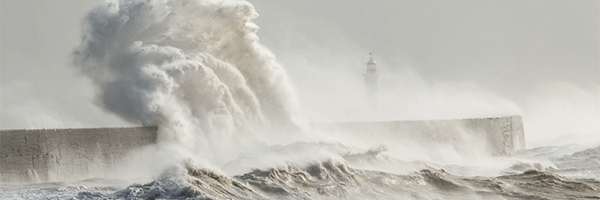I try to use big up and (especially) down days in the stock market to stress test my portfolio.
One of the things I look to learn from a high volatility down days is how the hedges that I’ve put on to protect my portfolio work under big stress. So, for example, on a big day down day like July 16, when the Dow Jones Industrial Average fell 725 points, I looked to see if 1) the hedges I owned worked to reduce or better yet eliminate my downside losses, and 2) how much those hedges were costing me in opportunities for upside gains postponed.
On this day I had heavily hedged my personal portfolio using Call Options on the VIX, the CBOE S&P 500 Volatility Index. The VIX tracks the prices that investors and traders are willing to pay–in the short term–for hedge risk using options on the S&P 500 index. When fear rises in the markets, investors and traders are willing to pay more and the VIX climbs. (Which means the you make money if you owned Call Options on the VIX. Today, August 17, for example, the VIX climbed 11.10% to 17.91 at the close on weaker than expected retail sales numbers for July. The November 17 VIX Call Option with a strike price of 18 that I own in the JubakAM.com Volatility Portfolio, gained 11.76%.)
Back on July 16, the VIX hedges that I owned completely offset the drop in the Dow Industrials. In fact, they did a bit better and my personal portfolio as a whole showed a gain on the day of about 0.2%.
But that “insurance” comes with a cost. To get that degree of protection I’d put roughly 30% of my portfolio’s value into those hedges. Great on a day like July 16 when that insurance paid off. Not so great on the average day recently when stocks have been inching higher. On those days the money that I’d put into those hedges, rather than into long positions, earned me nothing (or worse cost me money.)
I don’t normally keep 30% of my portfolio in hedges against a downward move. It’s an indication that I believe risk has been climbing in this market as the summer has gone along. And that we’re about to see another step upward in risk in September and October.
In other words the cost of that “insurance” is justified by my increasingly negative forecast of the coming market weather.
But I’ve also been looking at ways to reduce the cost of that insurance. For example, I’ve been looking carefully at what I own in my portfolio that I really want to pay to insure.
To give you a real world example of how this works. When I was a kid, my family lived in a big 1923 house that my grandparents had built. Behind the house stood a rather ramshackle old garage that my Dad used to store his fleet of lawnmowers and an old chicken coop that my Dad used as a greenhouse. (Yes, once upon a time everyone in that neighborhood raised their own chickens. As a kid I had a pet duck that lived in the chicken coop.) Toward the end of my Dad’s life as I was paying his bills, I noticed that his insurance covered the house but not those back buildings. Of course, my Dad explained, those buildings weren’t worth insuring and the house was.
You’ve probably got stocks in your own portfolio that are the equivalent of that old chicken coop. They’re not worth insuring because their future prospects aren’t all that great or because the near term “weather forecast” for those stocks is especially threatening. Right now I think it’s worth going through your portfolio to sell some of those “not-worth-insuring stocks.” The cash that you raise from those sales adds safety to your portfolio, reduces your need for hedges (insurance) and gives you a supply of money to use to buy better stocks if prices become attractive.
I’ve got a few candidates like this to sell out of my online portfolios. Tomorrow I will sell shares of Wyndham Hotels (WH) out of my Jubak Picks Portfolio, for example. I bought these shares in a belief that the post-vaccine recovery would lift this stock. The rising tide hasn’t lifted the stock–I’m looking at a 2% loss in this position from my March 17, 2021 purchase–and now with the resurgence of the Pandemic with the Delta Variant I have to think that the tide is likely to be running at ebb.
On the same logic I’ll be selling MGM Resorts International (MGM) out of the Jubak Picks Portfolio tomorrow. Here these shares include the added risk of further travel restrictions to Macau as China’s government takes steps to control the outbreak of the Delta Variant. I’ve got a 7.45% gain in this position since I added it to the portfolio on February 11, 2021.


